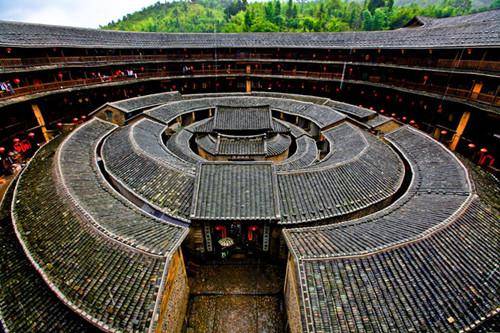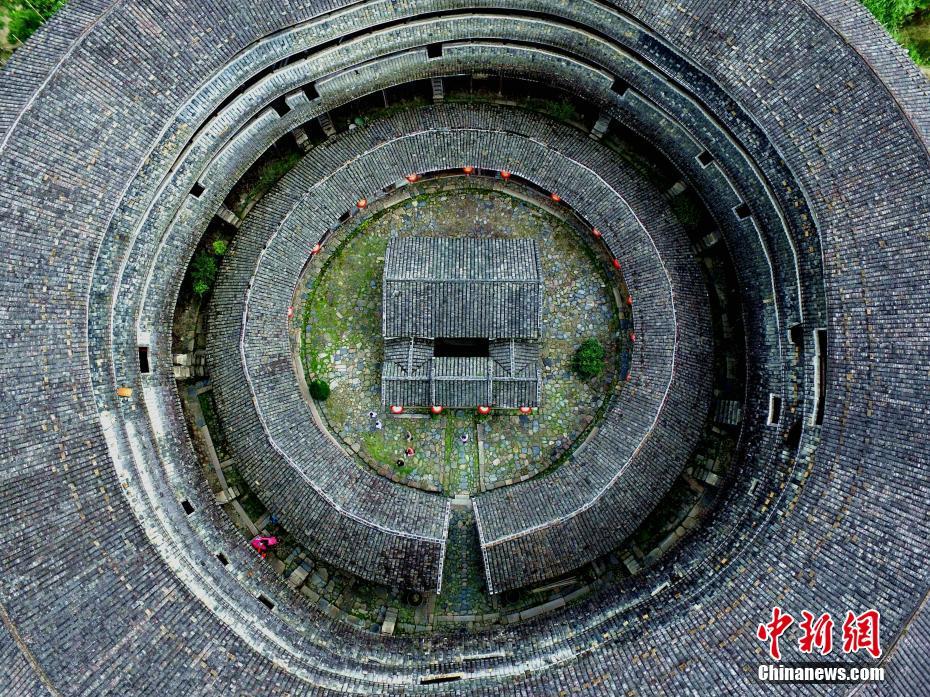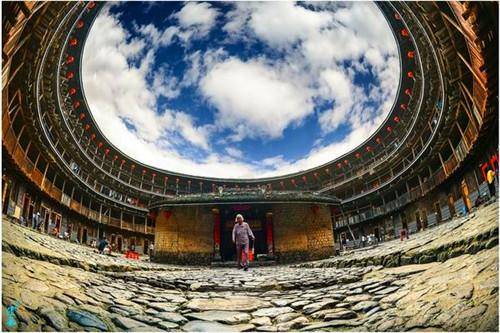Moments in Fujian
Home >> Moments in FujianA rounded perspective: Fujian's spectacular circular houses
Source: gbtimes.com | 2017-10-22 15:14 Click:
In the early 1960s, the CIA made an unsettling discovery.
Concealed between the steep mountain ridges of China’s Fujian Province, they snapped satellite aerial photographs showing a collection of large doughnut-shaped buildings.
With nuclear tensions running high, the findings caused more than a little alarm in the White House. Could they be missile launch frames? Nuclear reactors? Researchers were sent to China to investigate.
After spending a few months digging for clues, the investigators were relieved to discover that the mysterious structures were not nuclear at all: they were traditional houses that had been standing for hundreds of years.

Clay-tiled roofs and a strong outer wall are common features of tulou. china.com
These are tulou (literally ‘earth buildings’) – and Fujian Province is home to an estimated 3,000 of them. Built as early as the 12th century, they were the creation of Hakka nationality communities, many of whom migrated to the south of China during the Song dynasty (960CE - 1279CE) to flee social unrest in the north.
Many groups of tulou are encircled by mountains and surrounded by fields of rice, tobacco and tea. Not exclusively circular, the buildings can also be rectangular, pentagonal or oval-shaped. Common features include a clay-tiled roof, windows that mostly look inwards onto a central courtyard, and a thick, reinforced outer wall, historically used to protect residents from bandits. The sturdy structure is known to withstand earthquakes – an important feature in this tremor-prone region.

A square hut in a round hole. Tulou buildings come in a variety of shapes, including rectangles, ovals and pentagons. 王东明 chinanews.com
Standing at 5-6 stories tall, some tulou can house up to 800 people, or 30-40 families. The spacious inner courtyard functions as a communal pen for animals, as well as a shared outdoor space for human residents. UNESCO, which awarded World Heritage status to a group of 46 tulou in 2008, describe this communal living situation as 'a little kingdom for the family' and a 'bustling small city'.
But while their solid build has kept Fujian’s tulou standing strong for centuries, they may not be that way forever: a CNN feature last year reported that many of Fujian’s unprotected tulou were falling into disrepair, as residents moved from the countryside to the cities in search of economic opportunities.
UNESCO describes tulou as "exceptional examples of buildings combining tradition and function, exemplifying a particular type of communal living."

A large inner courtyard provides outdoor space for residents and domestic animals. china.com